DATE – June 25, 26, 2017
LOCATION – Ryerson University, Rogers Communications Centre,
80 Gould Street, Toronto, Ontario, Canada
DISCIPLINE – Interactive art
MEDIUM – Telepresence HMD
STATUS – Confirmed
WEBLINK – https://conference.virtualreality.to
https://keram-malicki-sanche.ongoodbits.com/2017/05/02/vrto-newsletter-no-50-giants
FUNDING – Canada Council, Media Arts
 David Rokeby Graham Smith Vincent John Vincent
David Rokeby Graham Smith Vincent John Vincent1983 – Very Nervous System 1983 – Displaced Perspective 1986 – Mandela
2016 – Hand – held 2017 – Displaced Perspective 2.0 2017 – Mandela 2.0
What happens to presence when it is subjected to screens, to total surround, to telepresence, to interactivity, to simultaneous access to and from geographically separate other presences? Probing precisely this dimension, 3 international media artists from Toronto revisit 30 years of experimentation and achievements.
Featuring 3 of the world’s first interactive Virtual Reality artworks, “Presence Fields” is an exhibition by Toronto artists David Rokeby, Graham Smith and Vincent John Vincent that explore the possible message behind the new medium of Virtual Reality. First created by the artists in the early 1980’s, the exhibit parallels these works with 3 of their current works in the same field of artistic exploration. The exhibit is a manifestation of McLuhan’s concepts that artists have a historical role as technological pioneers and that avant-garde artworks can be important “markers” that help define how a new medium impacts society.
Presence Fields interrogates the meaning and the experience of presence in different configurations and situations as they are affected by technology. Telepresence comes to mind first because it is the most obvious addition introduced by new technologies, from the time of radio and the telephone, but improving every decade all the way from voice, image and movement transmission to touch and 3D today.
Presence, however, means more than “being there”. Presence is a complex feeling, rich in variations, closely related to touch, affecting emotions in both positive and negative ways. A close cousin to the feeling of intimacy, the sense of presence reaches deeply in human sensibility. It’s also a physical paradox, because it requires the object to be there (with exception in all kinds of delusion), but that object can be out of sensorial reach and reside legitimately only in imagination.
The experiences offered to the patron in Presence Fields thus tend to underline the user’s presence as much as the sense or intuition of the presence of another. Their value is authentic in that it is not enough to read about them or watch them in an internet video, because they only reveal their meaning by the experience itself.
One thing these artists all share, is a genuine respect for Marshall McLuhan, a respect that the Canadian prophet malgré lui reciprocated. “The artist, he wrote, is the man in any field, scientific or humanistic, who grasps the implications of his actions and of new knowledge in his own time. He is the man of integral awareness.”
Derrick de Kerckhove
Director of the McLuhan Program in Culture and Technology, University of Toronto, 1983 to 2008
David Rokeby
http://www.davidrokeby.com
David Rokeby is a Toronto-based artist who works with a variety of digital media to critically explore the impacts these media are having on contemporary human lives. His early work “Very Nervous System” (1982-1991) was a pioneering work of interactive art, translating physical gestures into real-time interactive sound environments.
Graham Smith
https://designartscience.org
Graham Smith is a pioneer in the area of VR having exhibited the world’s first Head Mounted Display artwork in 1983, the first trans-Atlantic telepresence robotic artwork in 1986 and the first use of panoramic imagery in a VR environment in 1988. He is Chief Science Officer at the Dutch company Webchair and a PhD student at University College Dublin where he is researching the positive effects telepresence technology can have to help re-integrate autistic children back into school environments in a Ryerson University based research project called WEBMOTI.
Vincent John Vincent
http://www.vjvincent.com
Vincent John Vincent is a Toronto based artist, inventor, and entrepreneur, who co-invented video gesture control technology with his partner, Francis McDougall starting back in 1985. They have been the world leaders, forging and establishing the application and market for the technology, through their company, GestureTek, winning countless awards and picking up over 45 patents on the way.
David Rokeby Graham Smith Vincent John Vincent
1983 – Very Nervous System 1983 – Displaced Perspective 1986 – Mandela
2016 – Hand – held 2017 – Displaced Perspective 2.0 2017 – Mandela 2.0

Presence is a complex feeling, rich in variations, closely related to touch, affecting emotions in both positive and negative ways. A close cousin to the feeling of intimacy, the sense of presence reaches deeply in human sensibility. It’s also a physical paradox. Because it requires the object to be there (with exception in all kinds of delusion), but that object can be out of sensorial reach and reside legitimately only in imagination.
What happens to presence when it is subjected to screens, to total surround, to telepresence, to interactivity, to simultaneous access to and from geographically separate other presences, etc.? Probing precisely this dimension, three international media artists from Toronto revisit 30 years of experimentation and achievements.
David Rokeby, for example, has been testing the sensations of touch and presence, first creating a new perception of space itself by involving the whole body in the production of sound. In Very Nervous System, the specific sound produced by specific gestures in space reveals in real time a continuity of my presence in and with space itself. It gives me a new sense of my own presence. The VNS version presented in Rotterdam in 2011, also uses the combination of bodily movement and sound, but in a very different way, instead of producing sound as would a musical instrument VNS2 allows two or more persons to enter in immediate contact with each other via sound as the body of one runs virtually into that of the other on the other side of the ocean. The real body and the virtual lock into a paradoxical and sonorous embrace. The presential power of that installation is extremely powerful. Hand-held, the well named installation of an invisible sculpture revealed by touch alone, has an area where the user’s hand touches other hands in the sculpture, strongly evoking the tactile experience. This is virtual presence par excellence.
Graham Smith’s Displaced Perspective 2.0 adds a significant feature over the 1.0 version of 1983, that is, to allow the user to experience bodily the space on the other side of the telepresence transportation via the pool tables gaming surface. Smith quite literally wants to be in two places at once. In William Gibson’s 1984 best-seller, Neuromancer, there is mention of a program called the “Rider” that allows a physical person to tele-operate a virtual projection into a real but inhospitable space so as to explore and manage it without danger. His fascination with tele-robotics has led Smith since the early 1990s precisely in that direction, which is now rapidly turning into an industry. It is worth noting that Smith’s other dominant, not to say obsessive, fascination is now as then about the experience and the transmission of total surround and real time 360-degree video and photography.
By going 3D and high definition, the Mandala 2.0 is also a big improvement over the first edition. It also invites the user to occupy another space, this one not real, but virtual and allowing nevertheless complex interactions with objects that respond in movement, sound and texture, as real ones would. Vincent John Vincent is offering a new level of depth-of-field interactions that permits one to experience vertigo in total safety.
The experiences offered to the patron in Presence Fields thus tend to underline the user’s presence as much as the sense or intuition of the presence of another. Their value is authentic in that it is not enough to read about them or watch them on Vimeo, because they only reveal their meaning by the experience itself
David Rokeby, Graham Smith and Vincent John Vincent met at or via the McLuhan Program in Culture and Technology, at the University of Toronto. Graham Smith was a resident artist of the Program. He created there the Virtual Reality Artist Access Program (VRAAP), an offshoot of the weekly “artist-engineers” seminars series I had created and run at the Program since 1983, precisely. I was deeply inspired by McLuhan’s personal injunctions to privilege the artist if I really wanted to know anything really useful about my own time. He was fond of quoting Wyndham Lewis statement that “The artist is always engaged in writing a detailed history of the future because he is the only person aware of the nature of the present.” The series hosted many other Toronto and international artists, such as Norman White, Timothy Leary, Joe Davis, Stelarc Warren Rudd, Kit Galloway, Sherrie Rabinowitz and many others who fed into an informal network of pioneers. These artists didn’t think of themselves as pioneers at the time. They just did it, whatever it is they did. It is only looking back that one realizes that they were almost alone in experimenting with various aspects of presence that today we take for granted and have become the norm.
Most of them became very successful, the three artists featured in Presence Fields, being international stars. All three were involved in a dozen events initiated by the McLuhan Program, among which two transatlantic videoconferences for artistic performances. The first was Strategic Arts Initiatives (1986), between Salerno in Italy and Toronto, and later between Paris and Toronto, and the second, Les Transinteractifs/Transinteractivity (1988). Between Toronto, Salerno and Paris, Doug Back (in Toronto, at the Art Culture Resources Centre) and Norman White (in Salerno) performed the world’s first transatlantic arm-wrestling, each one weighing on a steel rod haptically connected to the other city by a pressure measuring and activating motor on each side and very low speed modems feeding that pressure across the ocean in streams of digital bits. They repeated the performance in 2011 from V2 in Rotterdam to Interaccess in Toronto, also brought together by Graham Smith.
Did they form a “school”? Not really. If there is a leadership, very loose and not constraining it could be attributed to Graham Smith who has done the most, including this event, to bring the other together. One thing they all share, is a genuine respect for Marshall McLuhan, a respect that the Canadian prophet malgré lui reciprocated. “The artist, he wrote, is the man in any field, scientific or humanistic, who grasps the implications of his actions and of new knowledge in his own time. He is the man of integral awareness.”
By Derrick de Kerckhove, June 12, 2017
 David Rokeby
David Rokeby
www.davidrokeby.com
David Rokeby is a Toronto-based artist who works with a variety of digital media to critically explore the impacts these media are having on contemporary human lives. His early work “Very Nervous System” (1982-1991) was a pioneering work of interactive art, translating physical gestures into real-time interactive sound environments. He has exhibited and lectured extensively internationally and has received numerous international awards including a Governor General’s Award in Visual and Media Arts (2002), a Prix Ars Electronica Golden Nica for Interactive Art (2002), and a British Academy of Film and Television Arts “BAFTA” award in Interactive art (2000).
 1983 – Very Nervous System (1991 version)
1983 – Very Nervous System (1991 version)
“Very Nervous System” was one of the first interactive artworks to present a compellingly visceral and immersive interactive audio experience. The 1983 version used custom cameras, an Apple ][ computer, a tape loop, an analogue synthesizer and custom sound distribution system to create a responsive sound environment that translated movement into sound in real-time. The project was under development from 1981 to 1991, evolving as the technologies of personal computers, video sensing and sound synthesizer evolved. It has been presented widely internationally, including at the Venice Biennale in 1986.
2016 – Hand-held (Documentation)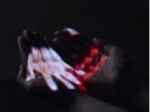
“Hand-held”, presented at Nuit Blanche Toronto this past October, creates an invisible 3-dimensional sound and image construct suspended in the exhibition space. This ’sculpture of possibilities’ reveals itself on the hands of the interacting public as they explore the installation.
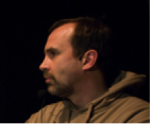 Graham Smith
Graham Smith
grahamthomassmith.com
Graham Smith is a pioneer in the area of VR having exhibited the world’s first Head Mounted Display artwork in 1983, the first trans-Atlantic telepresence robotic artwork in 1986 and the first use of panoramic imagery in a VR environment in 1988. He is Chief Science Officer at the Dutch company Webchair and a PhD student at University College Dublin where he is researching the positive effects telepresence technology can have to help re-integrate autistic children back into school environments in a Ryerson University based research project called WEBMOTI. He is currently completing 2 major interactive VR artworks called “Sensing Presence” and “Intersections” which will be exhibited in 2018.
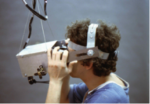 1983 – Displaced Perspective
1983 – Displaced Perspective
“Displaced Perspective” is the world’s first Head Mounted Display artwork which uses a live camera and a custom-built HMD that holds two displays which is suspended via counterweights from a movable boom on the ceiling. When the viewer puts on the HMD they see themselves from a different perspective 2 meters away looking back at themselves which provided them with a remote point of view of their body image and kinesthetic feedback as they moved around the room. A second recorded camera perspective is also displayed which creates a déjà vu like of sensation for the viewers who do not know what is real and what was recorded. This alteration of people’s perception of real verses recorded space created a powerful sensation of telepresence for the audience and generated a new perspective on perspective.
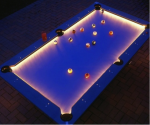 2017 – Displaced Perspective 2.0
2017 – Displaced Perspective 2.0
“Displaced Perspective 2.0” is a telepresence installation that allows people the ability to play a physical game of pool with someone in another location and is part of the Cohesion Cafés initiative, in collaboration with Dr Martine Delfos, that aims to create a global network of cafes that connect people in a natural setting that feels like a local café. Unlike Skype or other such videoconferencing systems, the life-sized imagery and display technologies used projects a realistic sensation of human presence allowing the audience the chance to become immersed within the linked environments and creates a new form of “environmental telepresence” for the audience.
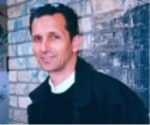 Vincent John Vincent
Vincent John Vincent
http://www.vjvincent.com
Vincent John Vincent is a Toronto based artist, inventor, and entrepreneur, who co-invented video gesture control technology with his partner, Francis McDougall starting back in 1985. They have been the world leaders, forging and establishing the application and market for the technology, through their company, GestureTek, winning countless awards and picking up over 45 patents on the way. Vincent toured the globe playing music on virtual instruments as audiences went on a creative journey as he danced through cyberspace. The Smithsonian Institute in D.C is just one of 9,500 installations worldwide. Vincent has received a Life Time Achievement Award from the Canadian New Media Association (1995), was inducted into the Digifest Digital Pioneer Hall of Fame (2012), and has been given the “Meet the Media Guru” award in Milan, Italy.
 1986 – Mandala
1986 – Mandala
The initial video gesture control system, known as the “Mandala Virtual World System”, was written on an Amiga PC and moved to a 486 based PC. A standard color camera placed your live video image on the screen, inside the virtual world, that responded to gesture interaction. It has a full 2D skeleton tracking system and let the user touch, push, pick up, bounce or throw an animated object. In the PC version the video image was digital and could shrink or grow in the 3D worlds. Users leaned right, left, up or down to move through the virtual worlds. Their company GestureTek, licensed their technology/patents to Sony for the Eyetoy/Move and Microsoft for the Kinect.
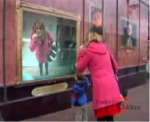 2017 -Mandala 2.0
2017 -Mandala 2.0
The system now uses the Unity 3D graphic engine to create 3D virtual worlds in high resolution and millions of colors and the 3D depth gesture recognition software they invented. The system can be installed on walls, windows, counters and floors or run on a single flat screen or a video wall, with the ability for multiple people to use it simultaneously and is currently being integrated with true 3D sound.